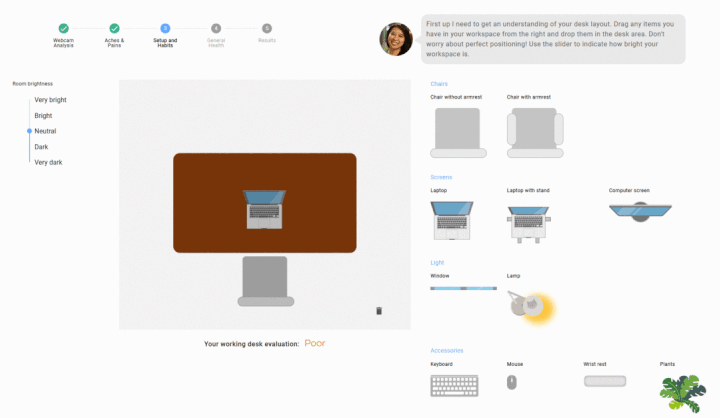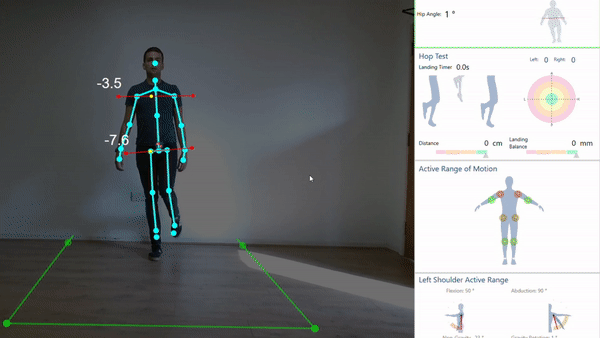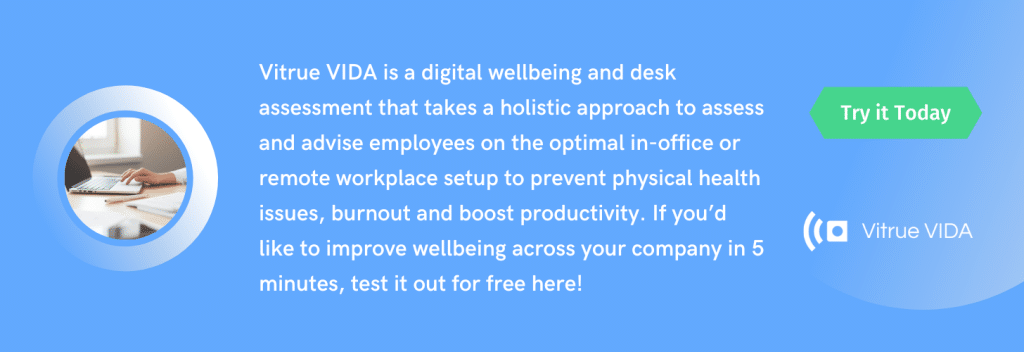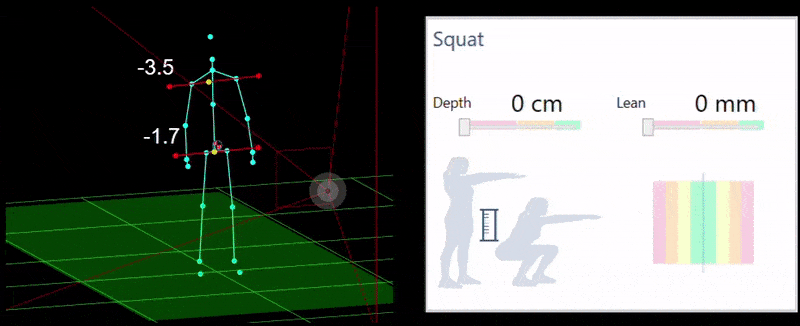Where we started
When Alex and I co-founded Vitrue Health in 2017 with the mission to empower people to engage with their own musculoskeletal health by accurately measuring their condition, presenting them with the information in a way they can understand and providing personalised solutions. Despite the fact that issues like back and joint pain are some of the largest contributors to lost quality of life years, the tools we give clinicians to assess and treat them look quite a lot like they did 30 years ago.
Our first product, EVVA, measures a person’s performance of simple functional movements like squats or standing up from a chair to spot musculoskeletal risks and assess existing problems. It uses that data to help both clinicians and patients understand exactly what issue a patient has, how they compare to their peers and how they are changing over time. EVVA is helping everyone from professional athletes to detect risks of injury before a match to patients having joint replacement surgery.
The decision to help with desk related pain
Last year, after seeing reports of huge increases in problems like back pain from people working from home (often at kitchen tables, on sofas or even in beds) we knew we could use our clinical technology to help. The relationship between a person’s posture, working behaviours and workspace setup and their workplace wellbeing is extremely strong. The kind of working practices that vastly reduce injury risk are not individually complicated, however they are extremely broad and can be very difficult for people to engage with.
When we made the decision to help solve this problem, we had a simple mission statement: “Use our advanced clinical technology to help people to work happily and healthily from anywhere”. The key ingredients to that mission are accurate assessment, personalised solutions and extremely engaging experiences – all strong focus areas in our clinical technologies too.
The experimental stage

We experimented with lots of fun and dynamic ideas like a squat based challenge game to use teams competitive instincts to remind them to take active breaks at home.
But in the end, it came down to the fact that the first step to solving a problem is the ability to measure it. While it’s extremely difficult to measure workplace wellbeing, particularly musculoskeletal health, it’s vastly more difficult when people are working remotely. So we set out to provide an objective, accurate assessment of workplace wellbeing with musculoskeletal health at the core.
The challenge
At Vitrue, we are experts in musculoskeletal health assessment. Accurate, objective assessment and engaging complex data presentation are what we do. But that doesn’t mean it wasn’t a huge development challenge. Not only were the users, use cases and environments different, but the entire technology stack had different requirements. Our development team had a colossal task and outdid themselves (stay tuned for an article from our CTO Alex for tech details).
Outside of the technology challenge we also had to understand the best delivery methods, how the system would be administered with minimal effort required from HR, Wellbeing and Health and Safety teams and above all, the clinical logic and algorithms to ensure the tool made a difference.
We launched Vitrue VIDA in November 2020 as a tool to assess desk ergonomics (height of screen, distance to screen etc) and posture using computer vision technology. It not only accurately measured some of the most important factors in desk related pain, but it did so in an engaging way. As one of our clients said, we “made health and safety cool”…!

We then take what we’ve learned about you, and provide a bespoke wellbeing report that outlines exactly what your risk factors are and the simple steps you can take to improve your musculoskeletal and holistic wellbeing.
The snowballing
From there VIDA took on a life of its own. Early customers were so enthusiastic and full of ideas that our product roadmap wrote itself. The additional problems that companies had in wellbeing became really clear. Some of the widely recognised best places to work in the world reported issues like:
“We want to take care of every employee’s needs, but each person is different. We can’t paint them all with the same brush.”
“We gave out generous work from home budgets ($1,000 each) but six months later we realised that although the budgets had been used, team members’ workspaces were not actually that much better.”
“Our company prides itself on challenging its employees and really taking care of them in return. In the office that meant certain perks, we don’t know how to do it in remote or hybrid working.”
We took statements like these and many others and in the 6 months since launch we:
- Got the tool certified to ensure customers were fulfilling their DSE regulatory requirements just by offering VIDA (by far the easiest and most scalable way to become compliant)
- Added a visual workspace planner that takes not just injury preventing equipment like laptop stands and keyboards into account, but also holistic wellbeing factors like lighting, plants and noise levels.
- Created an analytics dashboard for wellbeing and HR admins to understand the current situation in the team and to keep track of the effectiveness of other wellbeing initiatives.
- Launched an “Actions” feature that automatically converts the analytics data into actionable tasks showing employers the most impactful actions they could take to improve team wellbeing today.

One of the biggest additions we made is a reflection of the fact that mental and physical well being are intertwined. They have a symbiotic relationship: a person who develops chronic back pain is far more likely to burnout. A person who is burned out is far more likely to adopt behaviours and postures that lead to musculoskeletal pain. So it makes sense to assess and engage with them together.
We launched a Burnout assessment tool in March 2021 based on a scientifically-validated methodology. VIDA can now assess and create bespoke wellbeing programs for a person’s holistic wellbeing and reduce burnout risk or symptoms.
The data
In addition to helping employees improve their wellbeing, one of the key additions of VIDA is data in an area where there previously was very little. Employees needs vary widely making employers wellbeing programs extremely complex to design. By collecting detailed data on each person’s needs, VIDA can help optimise wellbeing solutions and provide evidence on their ROI. Stay tuned for a lot more in this area.
The future
We have so many plans for where to take VIDA. From doubling down on the personalised nature of the employee coaching experience, to incorporating more and more of our clinical assessment technology to ensure we can give the most comprehensive experience possible (sneak peek below), the future of VIDA is extremely exciting.

The results
The response to VIDA has been amazing. We’re proud to call some of the world’s best employers and most trusted companies as well as some of the most exciting scaleups in Europe among our users. Whether it’s a 100 person or 35,000 person customer, we’ve loved seeing the feedback rolling in.
In the past couple of months, we’ve been honoured at Fast Company’s World Changing Idea’s awards, by the Chartered Institute of Ergonomics and Human Factors and won the Best AI Product in HR award at the renowned CogX festival.

But everyone at Vitrue agrees that the best endorsement we’ve had has been hearing from multiple customers that there was a new slack group or huge activity on the team WhatsApp with people sending photos and discussing the improvements they’ve made after a Vitrue assessment. That’s how we know that VIDA is making a difference.

How this fits with the Vitrue mission
At Vitrue our goal has always been to improve quality of life through technology-enabled early detection and personalised treatment of musculoskeletal conditions.
The key to that outcome is helping a person throughout their pathway from the earliest stage possible. VIDA provides a way to help people from the earliest stages of musculoskeletal issues.





